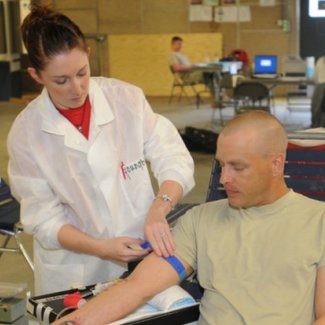
It takes less than a year to complete the necessary training to become a phlebotomist. Most phlebotomy training programs last between 4 and 8 months. It often takes another 6 months of clinical experience before employers will consider new phlebotomists as applicants. Additional clinical time may also be required by the state for certification or licensure. In all, it usually takes about 1 to 2 years to become a gainfully employed phlebotomist.
Becoming a Phlebotomist
Formal Training
Typically, no postsecondary education is necessary to get a job as a phlebotomist, but many employers do require formal training. Most phlebotomists with a high school diploma or the equivalent seek out formal training from a vocational certificate program in the community. Some hospitals, however, offer entry-level, on-the-job phlebotomy training to health care workers and, less frequently, to those without any health care experience.
It can be difficult to get a first phlebotomist job without at least six months of work experience. Formal training is useful in that many programs offer after-graduation employment assistance or, better yet, externships in community hospitals or clinics, helping students accrue attractive clinical work experience as part of their schooling.am
Phlebotomy training involves classroom and clinical instruction in topics like disease transmission and human pathology. Students learn Universal Precautions and basic medical terminology. The shortest programs may be 2 to 3 months long, but these are often more intensive. Some programs want applicants to have CPR certification before they matriculate.
Professional Certification
Certification is normally voluntary, but it is recommended as a way to establish credibility, get access to competitive jobs, and obtain peer support. There are several reputable national organizations that offer professional phlebotomist certification in the U.S., like the American Society for Clinical Pathology and the National Phlebotomy Association. Once they become certified, Certified Phlebotomy Technicians (CPTs) must complete continuing education coursework on a cyclical basis to maintain their certification.
Additionally, technicians can enhance their employability by becoming certified Donor Phlebotomy Technicians (DPTs), which qualifies them to work in blood collection centers, where they may handle donor education and recruitment and collect patients’ medical and families’ genetic history as part of the prescreening process.
Licensure
Some phlebotomists need a license to practice, but most states do not license phlebotomy at all. Those that do normally regulate the profession through the state’s Department of Health. Each state has its own unique rules regarding licensure. Some states don’t issue a license but prefer national certification with a particular credentialing organization. A few, like California, require both professional certification and licensure.
Regulatory states typically want candidates to pass an exam. Eligible test-takers are working phlebotomists with some accumulated clinical experience. The amount of experience needed varies by state. Regulatory states look for a minimum number of hours in the lab, usually around 1,000.











Leave a Reply